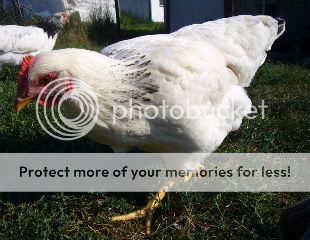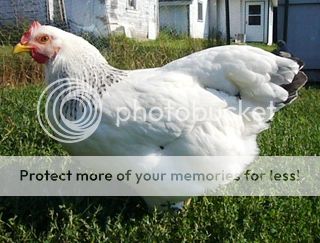Wow it's been awhile since I actually posted a question.
So I'm wondering about my Delaware pullets. My question is: Just what kinda white are they? Dominant? Recessive? Do they have the silver gene?
I have some clues *and pics* but don't know what I'm looking for or even if it's possible to know by looking at them. So that's the info I'm looking for. I am interested because it's likely I'll breed them at some point and would like to know what to expect.
Here they are:
Lulu


As you can see, Lulu has some muddy buffish coloring to her feathers. Her legs are bright yellow.
Sophie

Sophie appears pure. She has always had a slightly greenish cast to her legs.
Anybody have an answer?

So I'm wondering about my Delaware pullets. My question is: Just what kinda white are they? Dominant? Recessive? Do they have the silver gene?
I have some clues *and pics* but don't know what I'm looking for or even if it's possible to know by looking at them. So that's the info I'm looking for. I am interested because it's likely I'll breed them at some point and would like to know what to expect.
Here they are:
Lulu


As you can see, Lulu has some muddy buffish coloring to her feathers. Her legs are bright yellow.
Sophie

Sophie appears pure. She has always had a slightly greenish cast to her legs.
Anybody have an answer?





